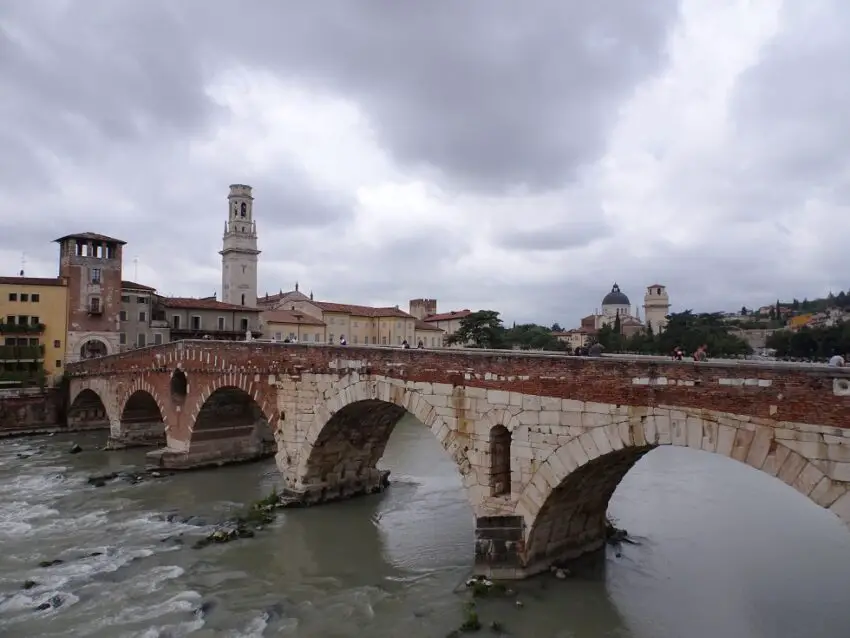Beautiful Verona is one of our favourite cities in Northern Italy’s Veneto Region, due to its wonderfully preserved medieval city core and the many vestiges of Roman architecture. Still, today it’s probably best known as the principal setting of William Shakespeare’s 1597 Play Romeo and Juliet.
While it’s clear that the source material the Bard borrowed from is mainly fictitious, this doesn’t stop millions of people from visiting Verona each year to pay their respects to the star-crossed lovers, and there are plenty of sites in town that are connected to the play.
As we’re both big Shakespeare fans, Stefanie and I checked out several sites connected to the play on our recent visit to Verona, and in this guide, I’ll introduce you to both the famous must-visit spots and some lesser-known locations, where you can escape the crowds.
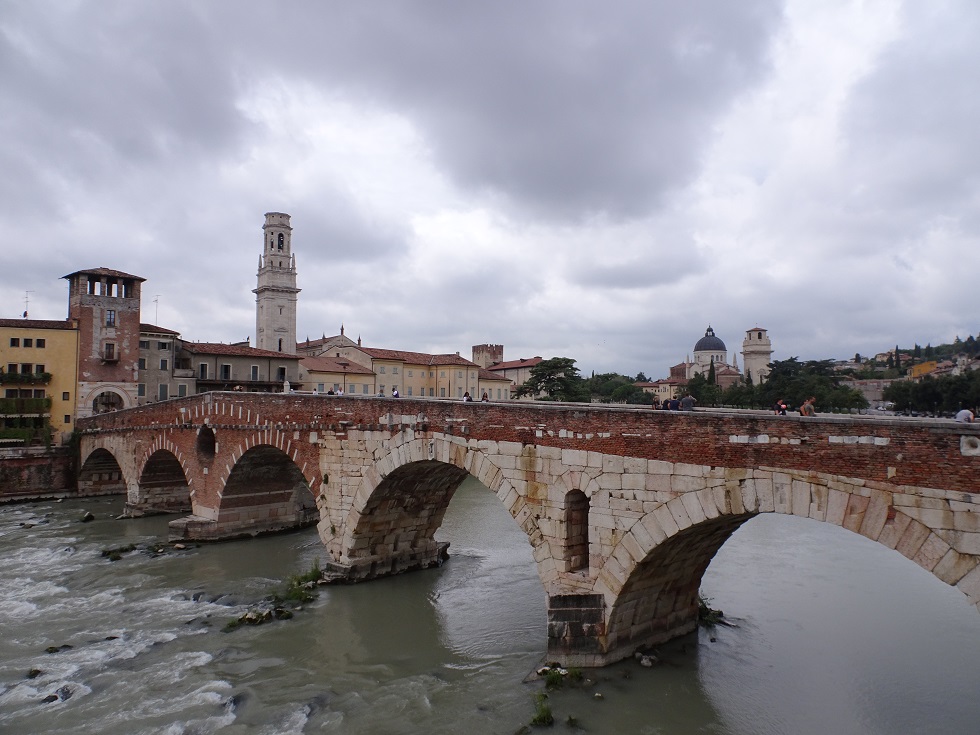
This post may contain affiliate links, and I might earn a small commission at no additional cost to you. For more info, click here.
Visiting the Sites from Romeo and Juliet in Verona
Juliet’s House and the famous Balcony
Oh, Casa di Giulietta – whereforth art thou so crowded? This palace in the city centre is the obvious Number 1 spot in the city connected to the play, and everybody else concurs, which means that the courtyard likely rarely is romantically deserted, but instead full of clamorous tourists. Your best bet is to come by in the morning, right when the gates are opened at 8.30 am.
As the former home of the Cappelletti Family which the Capulets are based on, this supposedly is the place where Romeo and his friends sneak into the rival family’s ball and where the lovers first set eyes on each other.
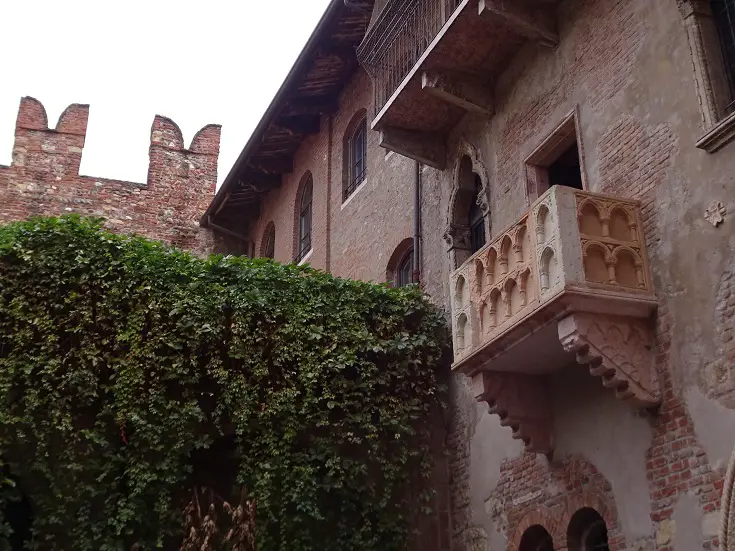
Today, the vine-covered courtyard contains a statue of Juliet (which seems to be copiously groped-at, judging by the shiny surface) and the balcony supposedly ascended by Romeo in the play’s most famous scene. Alas, I have to burst everyone’s bubble here, because while the building itself indeed dates to the 14th century, the balcony actually is a 20th-century-addition despite its throwback look.
The house itself contains a small museum displaying, amongst other things, some costumes from the 1968 Franco Zeffirelli film adaptation of the play and giving you a chance to step on the balcony messing up everyone’s picture (you know you want to).
The entrance fee to the house is 6€ (7€ if combined with Juliet’s Tomb), but the courtyard can be visited for free, so you can get a glimpse of the balcony and statue without paying. The house itself is open from 9am to 7pm (Check the times here). The courtyard is usually opened half an hour earlier.
The Casa di Giulietta can be found off Via Capello, which is leading south-east from the southern end of Piazza delle Erbe.
Romeo’s House
The former palace of the Montecchi Family, which the Montagues are based on, can be found a couple of minutes from Julia’s House. Here, you can only check out the fortress-like exterior of the building, which seems rather oppressive in the small alleyway it’s located in.
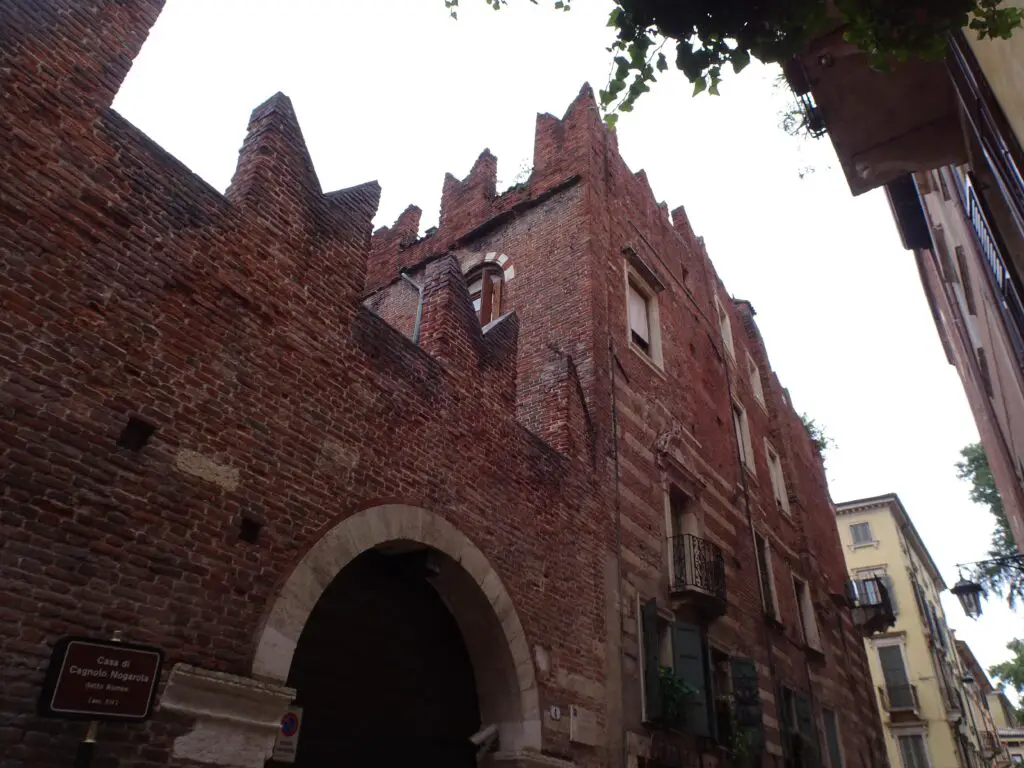
The reason you can’t take a peek inside its walls is that the owners didn’t want their building defaced by mindless tourists scratching their names into the walls, as happened in Casa di Giulietta. This is why we can’t have nice things, guys.
It can be found in Via Arche Scaligere directly east of the Scaliger Tombs (which are also worth a look, while you’re in the area).
Site of the Duel Between Tybalt and Mercutio
Via Mazzanti right next to Verona’s impressive main square is said to be where that douchebag Tybalt kills off everyone’s favourite character. The choice of location isn’t completely arbitrary, as the alleyway was a place of common clashes between Cappellettis and Montecchis, so the scene might as well have played out here.
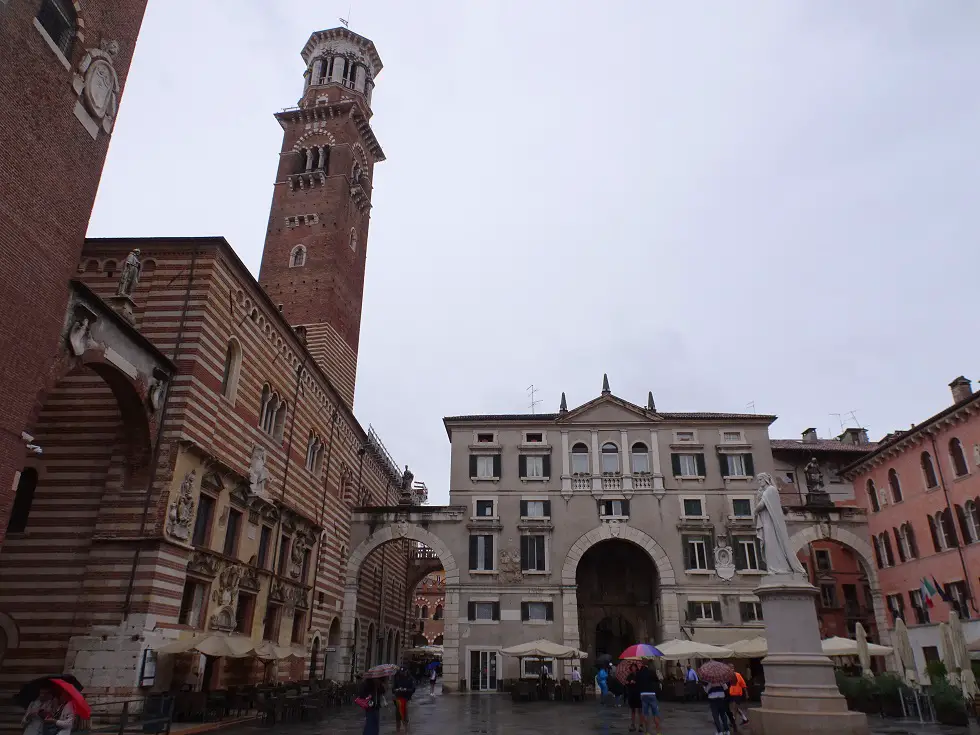
The alleyway can be found near the western corner of Piazza dei Signori, which is our favourite square in the city, due to its wonderful medieval architecture. Literature lovers also might want to check out the statue of Dante Alighieri contemplatively looking over the square. Verona is where the poet settled after he was exiled from Florence.
Site of the Duel Between Romeo and Tybalt
Romeo takes his revenge on Tybalt next to Palazzo Carlotti near the wonderfully preserved Roman Borsari Gate. There seems to have been a lot of chasing involved, as the location is a fair bit removed from Via Mazzanti. There’s a small plaque depicting the scene on the wall of Palazzo Carlotti.
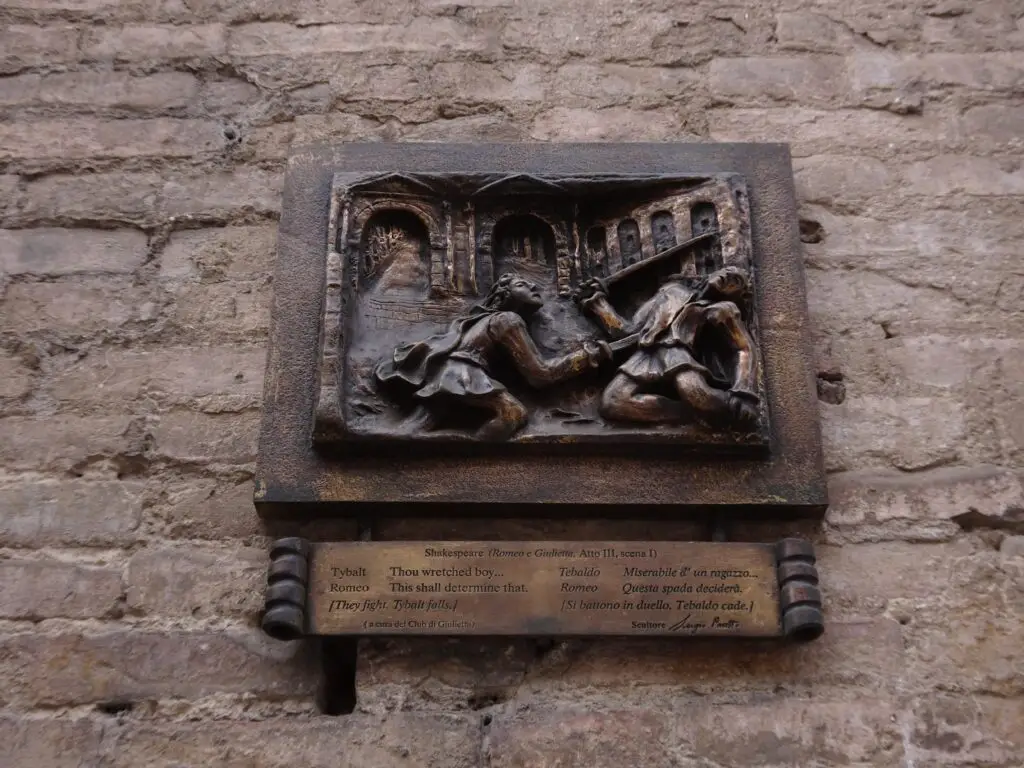
Look for it between the two westernmost windows on the southern façade of the building at Corso Cavour 2.
Juliet’s Tomb
The tragic ending of the play is said to have occurred in the San Francesco al Corso Convent, south of the city centre. Again, the location has been carefully chosen, as this was the only Franciscan Monastery during the time Romeo and Juliet is set, so it might as well have played out here.
We certainly found the small subterranean crypt with its open stone coffin to be an atmospheric place and thought that it would have been a fitting setting for the tragic double suicide.
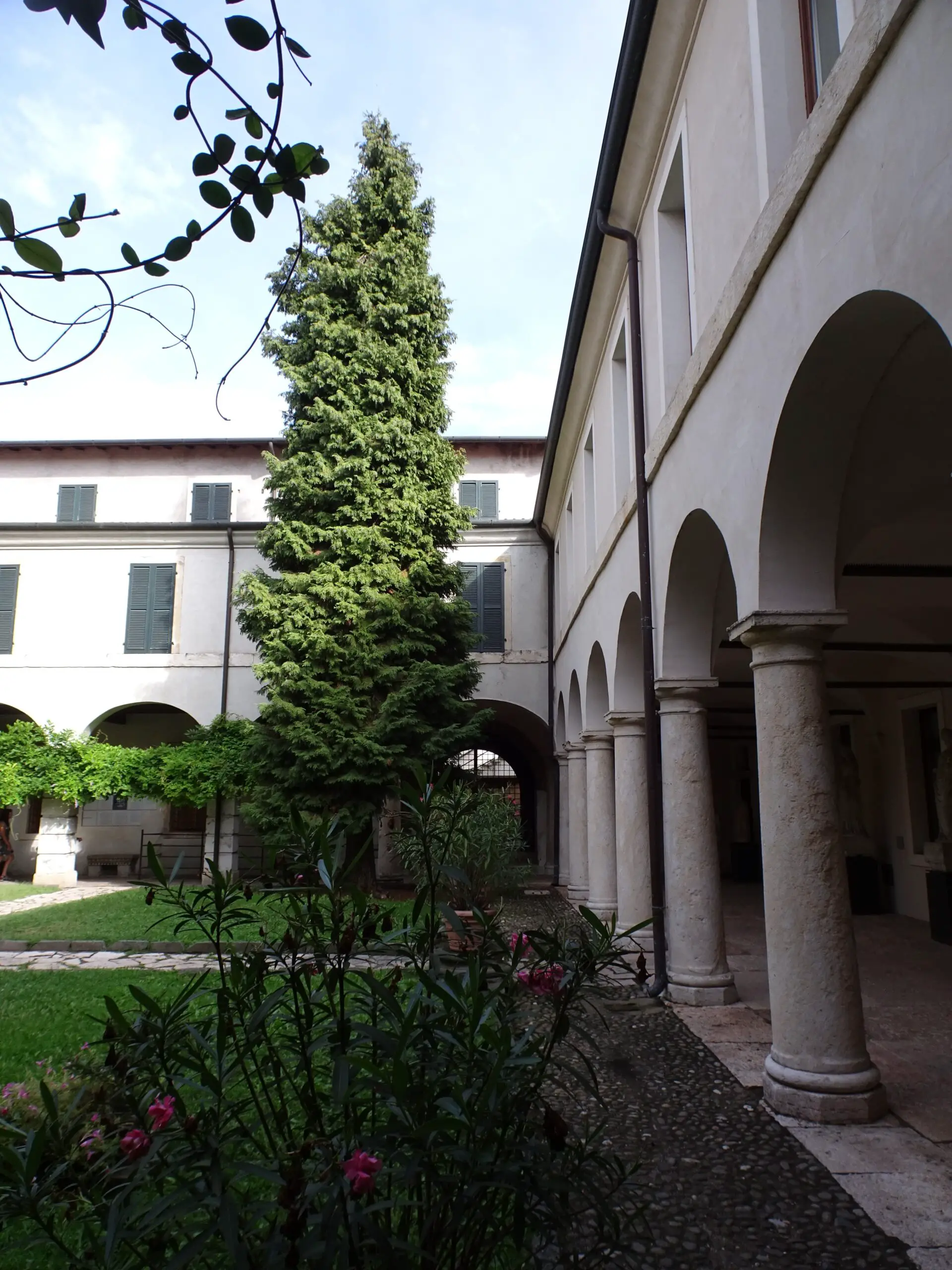

The entrance fee is 4,50€ (or 7€ if combined with Juliet’s House) and also allows access to the interesting Museo degli Affreschi, which features some beautiful medieval frescoes. It’s open from 10am to 6pm (double-check the times here).
I suggest you come here in the morning or late afternoon, so you can enjoy the peaceful atmosphere in the small courtyard without too many other people around. We were there shortly before closing time and had the place almost to ourselves.
Guided Tours of Verona’s Romeo and Juliet Sites
Given the popularity of the sites, it’s no big surprise that there are several highly-rated guided tours available. Check these options to find one you like.
Map of the Romeo and Juliet Locations in Verona
This map includes all the locations mentioned above. The site of the duel between Romeo and Tybalt has been marked as Porta Borsari, which is directly north-east of Palazzo Carlotti, where you’ll find the plaque.
Practicalities
How to Get to Verona
As the second-biggest city of the Veneto Region, there are frequent train connections to Verona from all over the region, like Venice (about 1.5 hours/10€), Padua (about 1 hour/8€) or Vicenza (about 40 mins./6€). You can also reach the city from Rome in a little over 3 hours (about 30€).
The main train station is Verona Porta Nuova about 25 minutes south of the city centre.
Where to Stay in Verona
There are plenty of mid-range as well as some budget options in the city but especially in the summer, you’d be well-advised to book in advance as prices tend to skyrocket. One of the more affordable options would be StraVagante Hostel & Rooms near the Porta Nova Train Station. Have a look at the map above for some other options.
Other things to do in Verona
The 4 Must-See Churches in the UNESCO-listed centre of Verona, Italy
